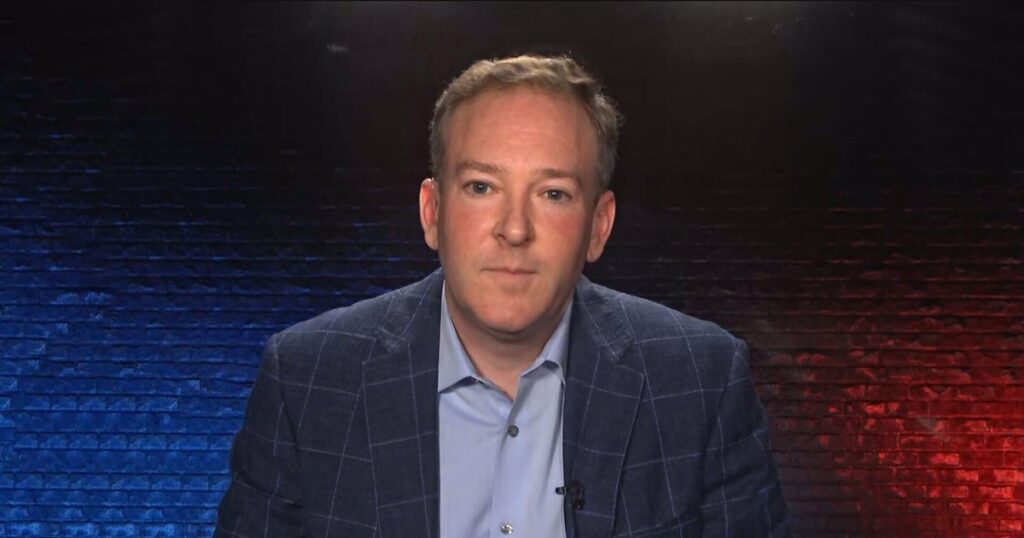When the Environmental Protection Agency announced it would roll back regulations aimed at curbing greenhouse gas emissions — especially from motor vehicles — it touted annual savings for Americans of $54 billion. The EPA said eliminating Biden-era policies, which encouraged higher fuel efficiency standards for cars and electric vehicle adoption to limit tailpipe emissions, would enable consumers to “have affordable choices when deciding to buy a car.”
But a CBS News review of the agency’s own regulatory impact analysis of the proposal found that gasoline prices would increase, and nearly a half million jobs would be lost by 2035, according to data from the U.S. Energy Information Agency, which was cited in the EPA’s report.
Cost of gasoline
In the EPA’s July analysis, the U.S. Energy Information Administration, which collects and analyzes energy data, showed Biden-era policies that were adopted by the end of 2024 would dramatically bring down the future cost of gasoline because more consumers would be driving electric vehicles, hybrids and fuel-efficient cars that require less gas.
It is challenging to predict the future gas prices because they’re subject to high uncertainty and market volatility, but under a future scenario where Biden-era policies have been revoked under the Trump administration, the EIA projects gasoline prices will continue to increase because of a higher demand for gas-powered cars and fuel.

The former administrator of the EIA, Joseph DeCarolis, explained in an email that if the government “disincentivizes electric vehicle purchases, more consumers will purchase gasoline vehicles resulting in higher gasoline consumption and high gasoline prices for everyone.”
“There’s a clear causal connection between rescinding measures promoting electric vehicles, such as EPA tailpipe standards, and the projection of higher gasoline prices,” he said.
When asked in an interview with CBS News’ “The Takeout with Major Garrett” about how this plan could raise gas prices, Zeldin did not directly address the question.
Instead, he argued that previous policies like an electric vehicle mandate were costing trillions of dollars to regulate climate pollution, saying the policies were “seeking to strangulate out of existence, entire sectors of our economy, and specifically our energy economy.
‘It’s important that we are applying common sense,” Zeldin said, “that we are cognizant of these economic demands and that, wherever possible, when we can protect the environment and grow the economy that we will choose both.”
Neither the Biden nor Obama administrations implemented EV mandates, though both encouraged EV adoptions by Americans and businesses.
Zeldin reiterated the Trump administration’s stance that the EPA does not have the power to regulate greenhouse gas emissions under the Clean Air Act unless an act of Congress changes that.
“Here’s my message: If Congress wants the EPA to be regulating the heck out of carbon dioxide, well, they could put it inside of law,” Zeldin said.
Impacts on fuel efficiency
Along with rolling back greenhouse gas emissions standards to limit tailpipe emissions, the EPA would also rescind fuel efficiency measures.
Under Biden-era fuel efficiency policies, a new standard gas-powered car was expected to get 47.1 miles per gallon by 2027, and by 2035, cars were expected to achieve 61.2 mpg, according to EIA data.
Without the Biden policies, model 2027 cars are supposed to meet a 43.6 mpg standard and gradually increase to 50.5 mpg by 2035.
Light trucks and SUVs, beginning in model year 2027, under a scenario where Biden policies are revoked by the Trump administration, are set to reach fuel efficiency of 27.2 mpg and increase to 28.6 mpg by 2035. Had the Biden policies remained in place, SUVs and light trucks were expected to meet a 28.4 mpg standard in 2027 and increase to 46.2 mpg by 2035, according to EIA data.
Future job losses
The EIA’s own data estimates that a future scenario — where Biden-Obama emissions standards are revoked — would lead to a loss of 450,000 jobs by 2035. Jobs would begin to rebound by 2045, but not enough to overcome the significant losses suffered in previous decades.
Peter Huether, senior transportation research associate at the American Council for an Energy-Efficient Economy, said in a statement, “Drivers would pay thousands of dollars more in fuel and maintenance costs over the life of a vehicle, and businesses could lose billions annually from higher trucking costs” as a result of the Trump administration’s deregulation.
“These costs would ripple through the economy, raising prices for everyday goods and undercutting job growth,” Huether said.
https://www.cbsnews.com/news/epa-rule-greenhouse-gas-emissions-gas-prices/


